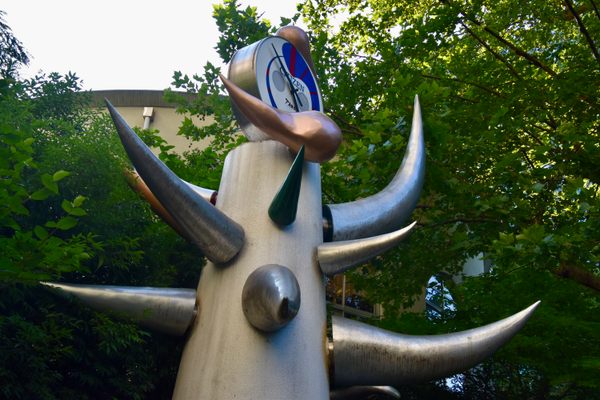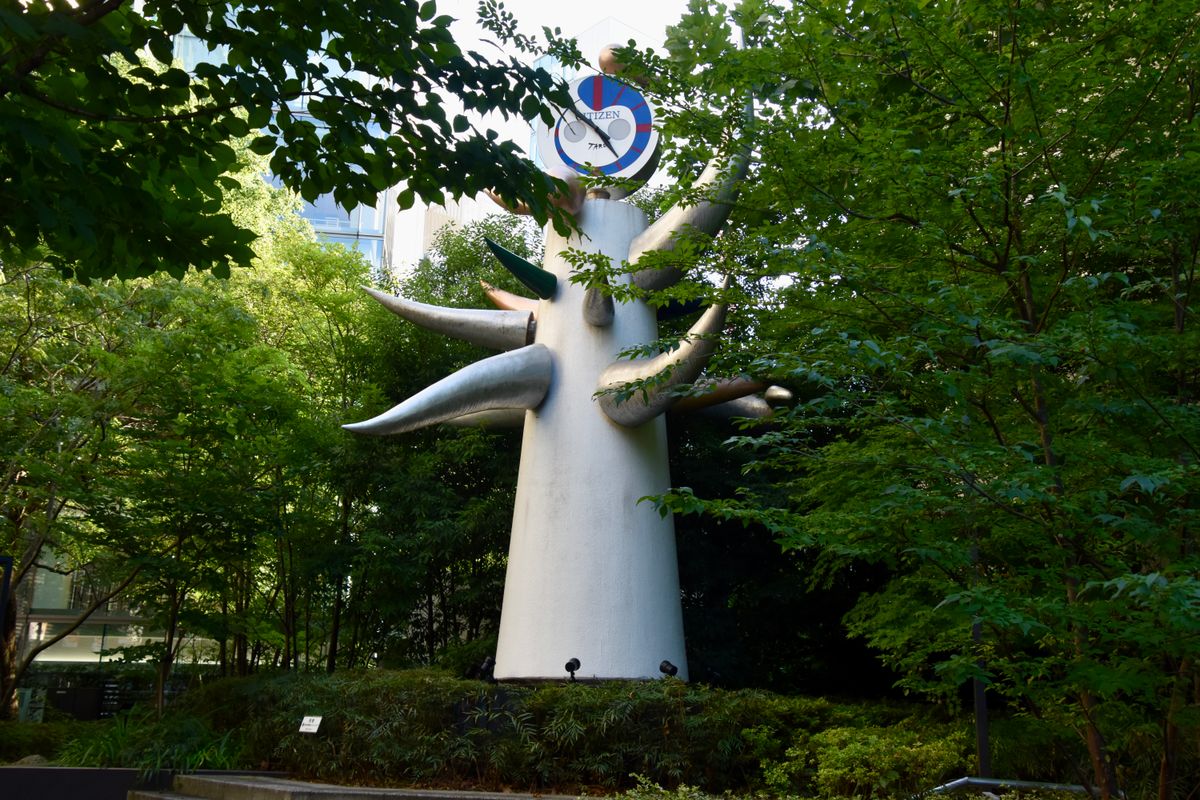About
In the 1960s, the Sukiyabashi area of Ginza was known as the foremost trendsetter in Tokyo's street fashion culture, but it also brought large groups of youths, and with them trouble much to the chagrin of the shopkeepers there. To give a better vibe to the area, the local community service organization the Sukiyabashi Lions Club commissioned renowned artist Taro Okamoto to create a clock tower.
When Okamoto visited Sukiyabashi, all he saw was a "horrid clash of colors and shapes." Thinking that the area needed something intense and calm at once, a vibrant symbol that fits in a city unique and different from its surroundings.
The resulting work was the Young Clock Tower, which appears to be a 25-foot-tall cylindrical tower with silver and golden cones protruding from its body. A stylized face can be seen on its clock face, simply consisting of a pair of round "eyes" and eyebrows and mustaches made up by the hands as they circle around over the course of the day.
At night, the Young Clock Tower is lit in red, yellow, blue, and green. According to Okamoto, it represents human passion and "time beyond time," the kind of time not bound by the mundanity of life.
While the public artwork is not given much attention these days, it is generally believed to be a spiritual predecessor to Okamoto's much more famous work, the Tower of the Sun, which served as the symbol of the Japan Expo and continues to be known as an icon of Osaka.
Related Tags
Hidden Japan: Sado Island, Nara & Kyoto
Explore a different side of Japan.
Book NowCommunity Contributors
Added By
Published
April 14, 2023




























